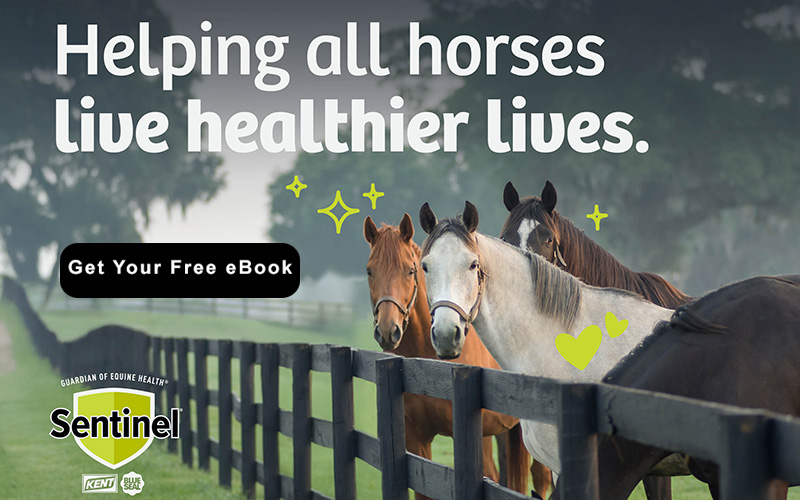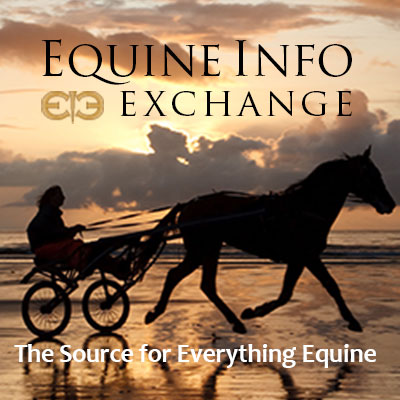Health & Education
We all want the best care possible for our horses. The Heath & Education section covers both Learning Institutions, Organizations as well as many sources for equine assistance including Veterinarians and Farriers.
For those who want a to formally study horses, the Education section includes College Riding, Equine Studies, and Veterinary Schools. Learn about the wide variety of horses in the Horse Breeds section. Supplements and Treatments Therapy are also included in the section.
Everyone can learn from Fine Art and there are some specialty Museums that might surprise you.
Horses as a therapy partner enrich the lives of the disabled. These facilities are listed in our Therapeutic Riding section. To help children and young adults build confidence and grow emotionally, please see the resources available on the Youth Outreach page.
Looking for a place to keep your horse? You can find it in the Horse Boarding section. Traveling? Find a Shipping company or Horse Sitting service if your horse is staying home!
Want to stay up to date with the latest training clinics or professional conferences? Take a look at our Calendar of Events for Health & Education for the dates and locations of upcoming events.
Do we need to add more? Please use the useful feedback link and let us know!
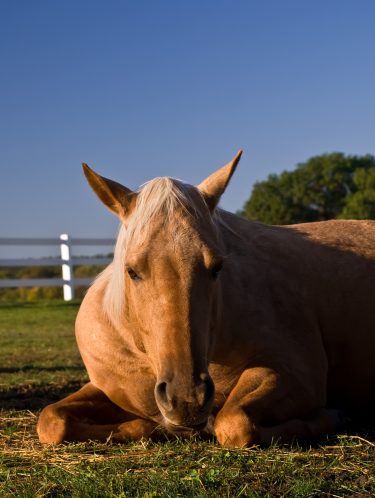
Equine Guelph has announced that the month of February, Canada’s coldest month, will be Colic Prevention Education Month. The next four weeks will be dedicated to increasing awareness of ways for caregivers to decrease the risk of colic in their horses. Although horses can be afflicted with gut pain in any season, the cold weather months are a challenging time – especially with impaction-related colic.
Here are three simple rules for preventing winter colic in your horse: 1. increase forage in diet, 2. keep your horse hydrated and 3. maximize turnout and exercise.
With these easy tips in mind for the cold weather months, check out Equine Guelph’s highly popular online healthcare tool, the Colic Risk Rater (http://www.thehorseportal.ca/ColicTool), an interactive experience customized to your situation. Answer a simple questionnaire about your horse’s current management and watch the interactive dial move depending on your answer. Then, try redoing by changing your answers, using the three simple rules for preventing winter colic. You will be surprised to witness the rater’s dial move away from high colic risk as well as noticing the difference in your before and after scores!
Now that you have seen firsthand what these changes mean in reducing the risk of winter colic, the following explains why these three rules are so important.
Rule #1 – Increase Forage in Diet
Forage is critical for hind gut fermenters. An 1,100 pound horse should consume 2.0% to 2.5 % of their body weight per day in forage (22 to 28 lbs). Horses only produce saliva when they chew, therefore feeding forage ad-lib will increase the production of saliva – one of the best buffers for the horses' digestive system and the most effective way to reduce the chance of ulcers and impaction colic.
Rule #2 – Keep your Horse Hydrated
While on the topic of impaction, 24/7 access to clean water is always imperative to keep all that forage moving. Remember, horses tend to drink less in the winter and impactions usually form with dry feed. February is typically Canada’s coldest month – with water in buckets freezing within 6-12 hours of filling – so be sure your horse doesn’t become dehydrated due to a frozen water bucket situation.
Read more: Equine Guelph Declares February Colic Prevention Education Month
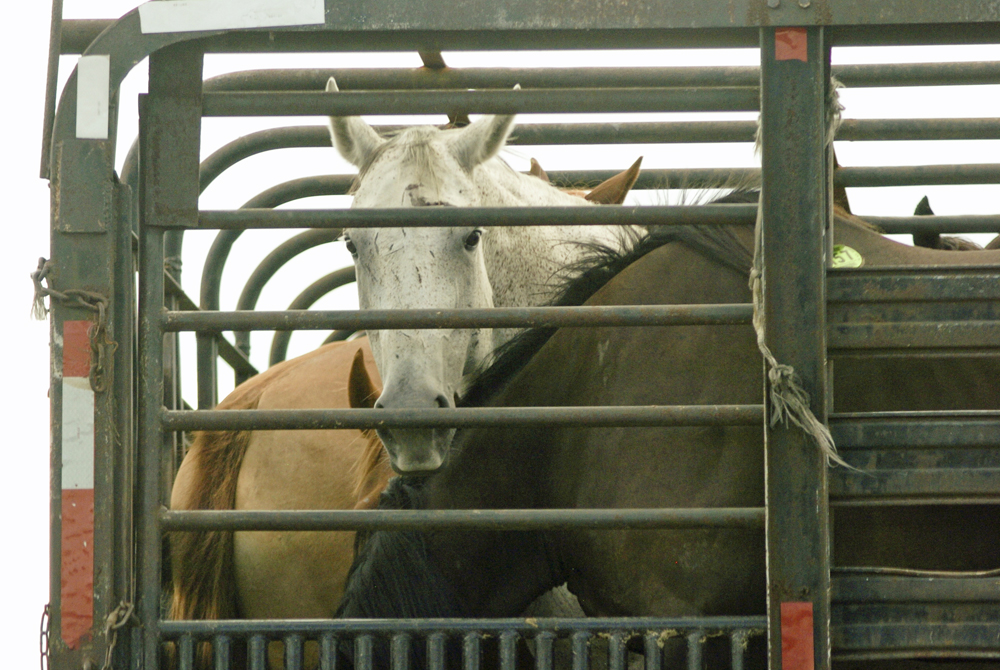
By Nancy Thomas
Last week, I launched the first post in a series about the equine slaughter industry. This is not a series I planned to write. My eyes were blown open by a training module I completed as part of my veterinary continuing education requirements. In the week before Part One was posted, I crawled further and further down a rabbit hole as I spoke to countless individuals on different sides of this issue. Each door that I opened revealed several more doors to explore. To say that this is a complicated issue would be the ultimate understatement.
Before I delve into the history of equine slaughter in the United States, I want to address my personal viewpoint on this practice. Last week, I stated that I have been having conversations with Dr. Lorna Grande, a veterinarian with the Humane Society Veterinary Medical Association. Lorna has taught classes on Animal Welfare.
"There are a lot of “Gotcha” things in the animal welfare world."
Dr. Lorna Grande, Program Director, Education and Outreach, Humane Society Veterinary Medical Association.
What does she mean by that? There are two aspects to that statement.
On the one hand, she is referring to the fact that we all have our sensitivities, and we manifest them in different ways. I personally cannot fathom sending my horse to an auction, knowing the high probability of my beloved horse landing in the horse trader or slaughter pipeline. But I’m not a vegetarian! My sentiments don’t preclude me from sending cattle to a slaughterhouse. Do I want to think about that hypocrisy? No, I don’t.
The other “GOTCHA” is how people perceive or dismiss your message if they don’t agree with absolutely everything you believe. I am educating myself about this industry as much as I am trying to educate you. There are many, many variables when one is talking about “animal welfare.” Let me give you an example in the small animal world…

As one of the most dedicated dog lovers on the planet, the concept that an animal shelter would have euthanized dogs piled up in a back room just devastates me. I find breed-specific legislation abhorrent. I am an advocate of “no kill” shelters… to a point. A medically or emotionally fragile or debilitated animal, or a dangerous one, might best be served by euthanasia, rather than prolonging their physical or mental suffering.
So I guess that means I am in favor of “mostly no-kill shelters” because there would certainly be times when a dog is simply not adoptable. If they are emotionally afraid of everything and everyone, can they really have a decent quality of life? At what cost? And at what danger to the public? ... So if you are a believer in total no-kill shelters, can you find my views and my research about equine slaughter credible?
As you read this series, there will be a multitude of twists and turns. Whereas I set out to uncover the veterinarian’s role in “regulating” this industry, I have realized that it is much, much bigger than that. Fasten your seatbelt, and try to keep an open mind about all of the information I hope to present.
My views on equine slaughter
Regardless of the fact that my eating habits subject cattle to a slaughterhouse, I am firm in my belief that horses are not livestock that should suffer the same fate. Their “fight or flight” mentality makes them extremely unsuited for a swift and painless execution in a slaughter box. This is just one aspect of this atrocity… what they experience when they finally get to Mexico or Canada.
Read more: The History Of Equine Slaughter In The United States (Part 2 In A Series)
A new imaging modality made available to veterinarians, the PET Scan (positron emission tomography), is not yet fully understood. Dr. Katie Garrett, Director of Imaging, and Dr. Jose Bras, lead surgeon at the Wellington practice, discuss the uses of the PET scan in practice. Diagnosing repetitive stress injuries early has been a challenge for veterinarians. An earlier diagnosis may be possible potentially saving the horse from a more devastating injury. The PET scan, in conjunction with other imaging modalities such as radiology, nuclear scintigraphy and ultrasound, will allow more complete investigations of the difficult lame horse.

By Steven Kraus, CJF, with Katie Navarra
To shoe or not to shoe? If you’ve ever wondered which is better for your horse, you’re not alone.
The internet is full of opinions for you to consider. People have strong beliefs on both sides of the debate, which has created confusion and philosophical disputes rather than focusing on what is best for the modern horse.
Rather than ask, Are shoes necessary? or Is going barefoot better than being shod?, think of each horse as an individual. You will find the best answer for any horse when you take this approach. Horses live in diverse environments and are in many types of work, which contribute to deciding the best option for each horse.
With that in mind, it’s impractical to think that one method of hoof care is the only way to take care of all horses’ feet. Horseshoes may all look the same in the back of your farrier’s truck, but there is no such thing as one method or one horseshoe for all horses. “Cookie cutter” style shoeing or trimming does not work. Whether you choose to leave a horse barefoot, or use a shoe, trimming is the foundation of your horse’s hoof care.
Making Objective Observations
Observation and analysis of each horse, and not emotions, must guide the decision-making process to determine the best management of any horse. Good horsemanship, such as knowing the horse, his function, how to properly train, care for and use him offers the best answer in the barefoot versus shoeing debate. Often, there is more than one solution to consider, and the decision of which method to use should be based on facts and data. The WIDTH Protocol (see below) can establish if any horse is a good candidate to remain barefoot or is better served with horseshoes from an objective rather than subjective point of view. This protocol was developed using my observations working on horses in the central New York State region, shoeing almost 250,000 hooves over a nearly 50-year career. Ask yourself the following questions:
Work: What Does the Horse Do?
There are a multitude of ways horses are kept and used. Some are highly competitive, others perform in harsh environments, and some spend most of their time on turnout doing nothing at all. Most horses live somewhere between. Considering how often the horse works, the surface he works on, and his natural hoof quality are all part of the equation.
Read more: To Shoe or Not to Shoe? An Excerpt from Shoeing the Modern Horse
Theriogenologist Dr. Pete Sheerin joins Dr. Bart Barber and Dr. Peter Morresey to talk about the steps you can take to get your barren mare ready for the upcoming breeding season. The trio discusses the wide variety of issues that can cause your mare’s infertility and how you can intervene to improve the chances of a successful pregnancy.
This video shows this man's first time lunging a horse, courtesy of the EIE Editorial team.
Are you new to lunging? Here are some recommendations if you are a beginner.
What is lunging? You've seen it done at the circus, with horses in the ring. The horse is at the end of a long line and the handler is in the center of a large circle. The horse goes around the outside edge of the ring with the handler on the ground in the center, holding the line. It's a great way to warm up your horse before you ride. It's also great way for new riders to understand the movement of a horse without having to manage control of the animal.
1. Start with a horse that is experienced at lunging. A person with no experience shouldn't be trying to lunge a horse with no experience. Some people may think "they can learn together. We say. "Fuggetaboutit!"
2. Your equipment is a lunge line and whip. Practice cracking the whip without the horse nearby and get the feel of it. We've found it is best to use the effects of the sound and we've NEVER struck a horse with a lunge whip.
3. The lunge line is long so make sure it is wrapped neatly in your hand and not dangling on the ground. We once witnessed that part of the lunge line dropped to the ground, got twisted around her leg. got tripped by the lunging horse and she fell. The horse got loose but fortunately everyone was OK!
4. You can use a halter, bridle or cavison. Some people also use side reins but for the purposes here, we'll stick to the basics. You can clip the lunge line to the side or bottom of the halter. If using a bridle, you can clip it to the side of the bit. Please make sure to either remove the reins or fasten them so they don't come loose to cause the horse to trip.
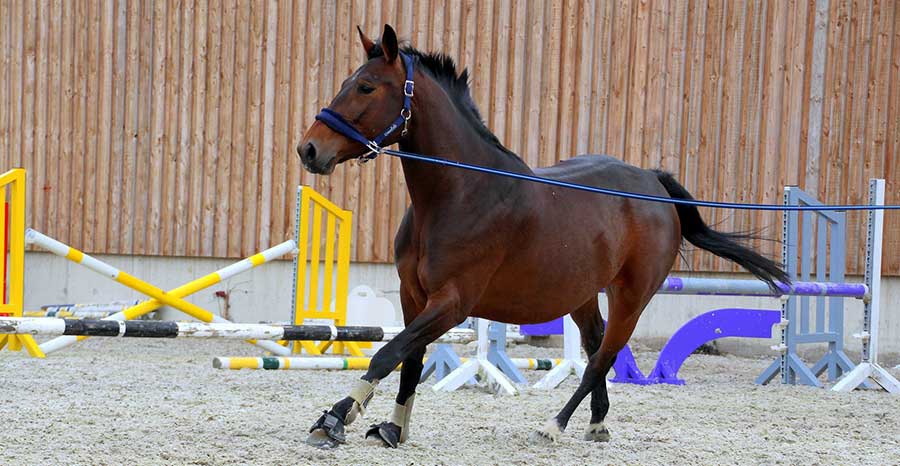
Training a horse is a challenging but necessary part of equine ownership. If you don’t train your horse, it will become unruly and hard to manage as it reaches adulthood. Independently of which horse breed you own, maybe it’s a Shetland pony or maybe an Arabian horse, training it will take time, but the rewards are there if you can pull it off.
Set Goals
Before you start training your horse, it’s important to know your main objective. Some people just want to ride their horses around a field; some want to take their horses onto the road, and some want to take their horses around the country in trailers. Whatever goal you have, make sure you take it step-by-step and don’t rush things. If you want to teach your horse to get into the trailer, you have to get it used to the trailer first but if what you want is to ride your horse, it would be best to get it used to having a saddle on first.
Trust
Having your horse’s trust is one of the most important aspects of training. If your horse doesn’t trust you, it won’t listen to you, and you’ll waste hours training it when it’s in a state that won’t accept any training. You need to build that trust over time by doing simple things like grooming it, spending time with it, walking it, etc. Once you’ve built up that trust, only then can you begin training it.
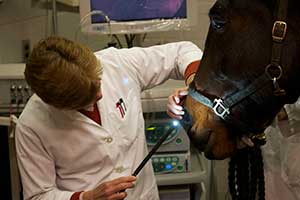
by Jackie Bellamy-Zions
Heaves is known as a disease that can leave a horse struggling to breathe, ending athletic careers and even rendering a pleasure horse unsuitable for riding. Commonly known today as equine asthma, it’s an irreversible disease brought on by repeated exposure to dust and moulds. Ontario Veterinary College researcher, Doctor Bienzle has a long history of primary and collaborative work studying asthma in horses. Her most recent contributions include working with a group of researchers in Slovenia, investigating stem cells as a potential treatment option.
Bienzle explains the usual causes of heaves are long term exposure to dusty or mouldy hay, bedding, dusty environments and sometimes even grass in hot humid climates that provide the right conditions for mould to thrive. “Horses get sensitized to these components in the inhaled air and with time, they develop airway inflammation and that begins to manifest with occasional coughing or runny nose.”
With continued exposure to the same particulates, the condition worsens, and the coughing becomes more continuous. The nose may be running and then there is thickening of the bronchial wall in the lung. There is extra smooth muscle being laid down and it becomes hard for the horse to exhale against mucus and inflammatory cells in the lumen of the airway.
In the later stages of disease, horses can develop a ‘heaves line’ (hypertrophic abdominal muscles are recruited to assist with exhaling air). By the time equine asthma is diagnosed, it has usually been present for a few years, if not several. Treatment of the symptoms includes immunosuppression, but the disease cannot be reversed.
Read more: Stem Cells Under Investigation as a Possible Future Treatment for Equine Asthma

by Laura Crump Anderson
Pregnancy is such an exciting and nerve-racking part of a woman’s life. There is no denying that it will impact your riding as your body adapts and changes to the challenges of becoming a mother. While most doctors and literature on the subject will tell you not to ride while you are pregnant, if you are healthy and your pregnancy is progressing normally, you can certainly continue to exercise. You may need to make some modifications for your changing body, and that’s what a pregnancy-specific routine is designed to help you do.
There are some exercises that are very safe to do while you’re pregnant; there are also some things you should avoid doing, such as deep twists, exercises on your stomach, and after your fourth month, exercises that have you on your back for extended periods of time. Be aware that expectant mothers often tire sooner, so don’t push yourself too hard as exhaustion leads to an increased risk of injury. The last thing you want from your exercise program is an injury that would make life even harder while you’re pregnant, so make sure you listen to your body and back off when it tells you to.
I developed a special strength-building routine after working with riding clients who wanted to stay active during their pregnancies. Pregnant women are some of my favorite to work with because it is such an exciting period in their lives. They know that they need to work hard and take care of their bodies. Some days are harder than others, but they always show up and give it everything they have. As a personal trainer, I could not ask for more.
Read more: Fitness for the Pregnant Rider - an excerpt from "Ultimate Exercise Routines for Riders"
- Published: Canagliflozin for Control of Refractory Equine Hyperinsulinemia and Laminitis
- Building Your Horse’s Confidence
- Help Nix the Culex Mosquito that Transmits 3 of 5 Core Equine Diseases
- Communication Between Human and Horse
- Research into Development of the Foal’s Gut Could Advance Treatment of Critical Cases of Diarrhea
- Mosquitoes Undeterred by Drought – 4 Tips to Protect Your Horse
- An Equine Methionine Crisis is Brewing
- Beware Supplemental Iron
- Sugar Does Not Cause Equine Metabolic Syndrome
- Welcome to London College of Animal Osteopathy (LCAO) (2:17)
- Katie Navarra Coaching - Reset: Reconnect: Reframe
- The New Foal Exam with Dr Laurie Metcalfe - Rood & Riddle Stallside Podcast
- Solving a Mare’s ‘Behavioral’ Problems
- Wintertime Equine Nutrition: 3 Facts
- The Heart of Laminitis Care
- Our First Year with Dr Peter Morresey and Dr Bart Barber
- What’s New in Equine Healthcare with Dr Peter Morresey and Dr Bart Barber
- EHV-1 Research Study and Infection Control Tips
- Hoof Care in Winter
- Caring for Barn Cats?






